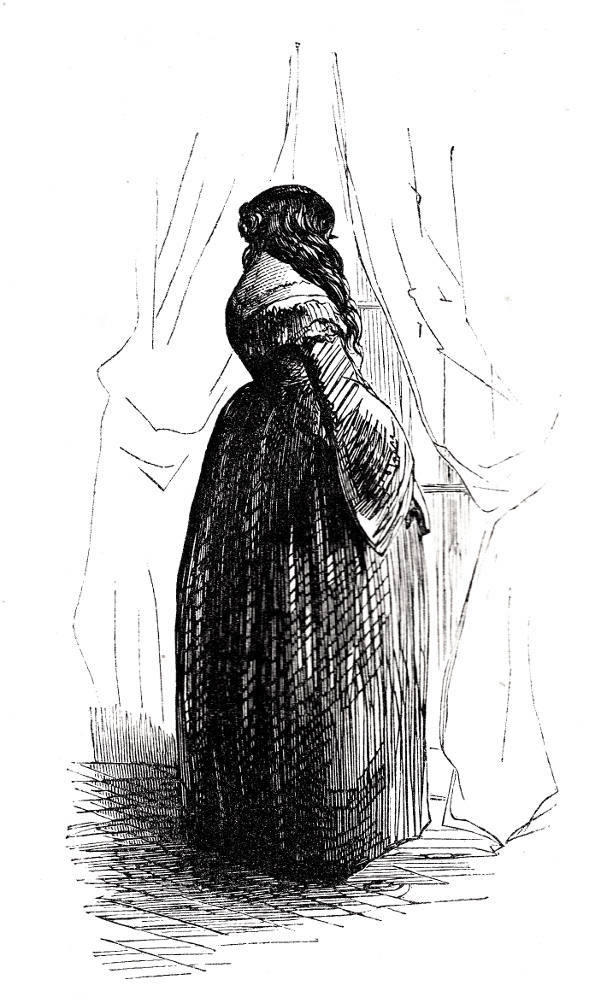Marian Halcombe
John McLenan
3 December 1859
9.4 cm high by 5 cm wide (3 ¾ by 2 inches), vignetted.
Second uncaptioned headnote vignette for Collins's The Woman in White: A Novel (3 December 1859), 777; p. 15 in the 1861 volume.
[Click on the image to enlarge it.]
The illustration tantalizes readers, but gives nothing away as they wonder what sort of face this young woman of elegant proportions and long, thick hair have. Thus, the illustrator here intuits Collins's purpose, namely to pique reader interest.
Scanned image and text by Philip V. Allingham.
